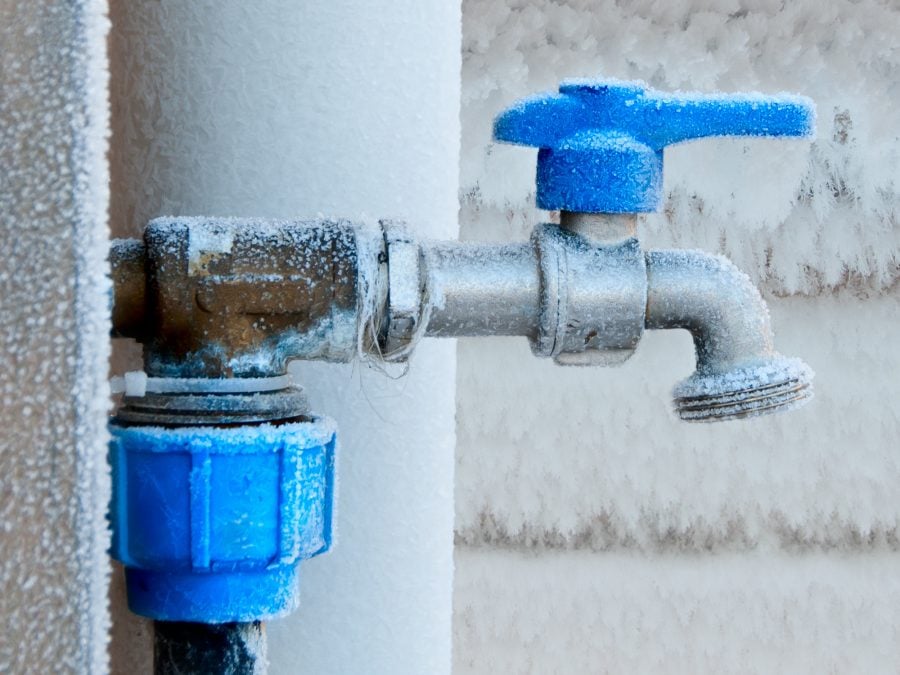Tips to Prevent Frozen Pipes in Winter: Professional Advice
Tips to Prevent Frozen Pipes in Winter: Professional Advice
Blog Article
What're your thoughts about How to prepare your home plumbing for winter weather?

Cold weather can wreak havoc on your plumbing, particularly by freezing pipes. Below's just how to prevent it from occurring and what to do if it does.
Introduction
As temperature levels decrease, the risk of frozen pipes rises, possibly resulting in pricey repair work and water damages. Recognizing exactly how to avoid frozen pipelines is vital for house owners in cold environments.
Avoidance Tips
Insulating prone pipes
Wrap pipes in insulation sleeves or utilize warmth tape to secure them from freezing temperatures. Concentrate on pipelines in unheated or exterior areas of the home.
Home heating techniques
Keep indoor rooms adequately warmed, especially areas with pipes. Open closet doors to allow cozy air to distribute around pipes under sinks.
Exactly how to recognize frozen pipelines
Search for decreased water flow from taps, unusual odors or noises from pipelines, and visible frost on revealed pipelines.
Long-Term Solutions
Structural modifications
Take into consideration rerouting pipelines away from exterior walls or unheated areas. Add extra insulation to attic rooms, basements, and crawl spaces.
Upgrading insulation
Buy high-grade insulation for pipelines, attic rooms, and wall surfaces. Correct insulation aids preserve constant temperatures and lowers the threat of frozen pipes.
Shielding Outdoor Pipes
Yard tubes and outside faucets
Detach and drain garden tubes before winter months. Set up frost-proof spigots or cover exterior taps with shielded caps.
Recognizing Frozen Pipes
What causes pipes to freeze?
Pipelines ice up when revealed to temperature levels below 32 ° F (0 ° C) for extended durations. As water inside the pipes ices up, it broadens, taxing the pipe wall surfaces and potentially creating them to rupture.
Risks and problems
Frozen pipelines can lead to water supply disturbances, residential property damage, and costly fixings. Burst pipelines can flood homes and trigger considerable architectural damages.
Indicators of Frozen Pipeline
Identifying frozen pipelines early can prevent them from bursting.
What to Do If Your Pipes Freeze
Immediate activities to take
If you think icy pipes, keep taps open to eliminate pressure as the ice melts. Utilize a hairdryer or towels taken in warm water to thaw pipes slowly.
Final thought
Stopping icy pipelines requires proactive actions and quick responses. By understanding the causes, signs, and safety nets, house owners can safeguard their pipes during winter.
5 Ways to Prevent Frozen Pipes
Drain Outdoor Faucets and Disconnect Hoses
First, close the shut-off valve that controls the flow of water in the pipe to your outdoor faucet. Then, head outside to disconnect and drain your hose and open the outdoor faucet to allow the water to completely drain out of the line. Turn off the faucet when done. Finally, head back to the shut-off valve and drain the remaining water inside the pipe into a bucket or container. Additionally, if you have a home irrigation system, you should consider hiring an expert to clear the system of water each year.
Insulate Pipes
One of the best and most cost-effective methods for preventing frozen water pipes is to wrap your pipes with insulation. This is especially important for areas in your home that aren’t exposed to heat, such as an attic. We suggest using foam sleeves, which can typically be found at your local hardware store.
Keep Heat Running at 65
Your pipes are located inside your walls, and the temperature there is much colder than the rest of the house. To prevent your pipes from freezing, The Insurance Information Institute suggests that you keep your home heated to at least 65 degrees, even when traveling. You may want to invest in smart devices that can keep an eye on the temperature in your home while you’re away.
Leave Water Dripping
Moving water — even a small trickle — can prevent ice from forming inside your pipes. When freezing temps are imminent, start a drip of water from all faucets that serve exposed pipes. Leaving a few faucets running will also help relieve pressure inside the pipes and help prevent a rupture if the water inside freezes.
Open Cupboard Doors
Warm your kitchen and bathroom pipes by opening cupboards and vanities. You should also leave your interior doors ajar to help warm air circulate evenly throughout your home.

I stumbled upon that piece of writing on How To Avoid Freezing Pipes when doing a lookup on the web. For those who enjoyed reading our page if you please don't forget to share it. I am grateful for your time. Kindly come by our blog back soon.
Click Here Report this page